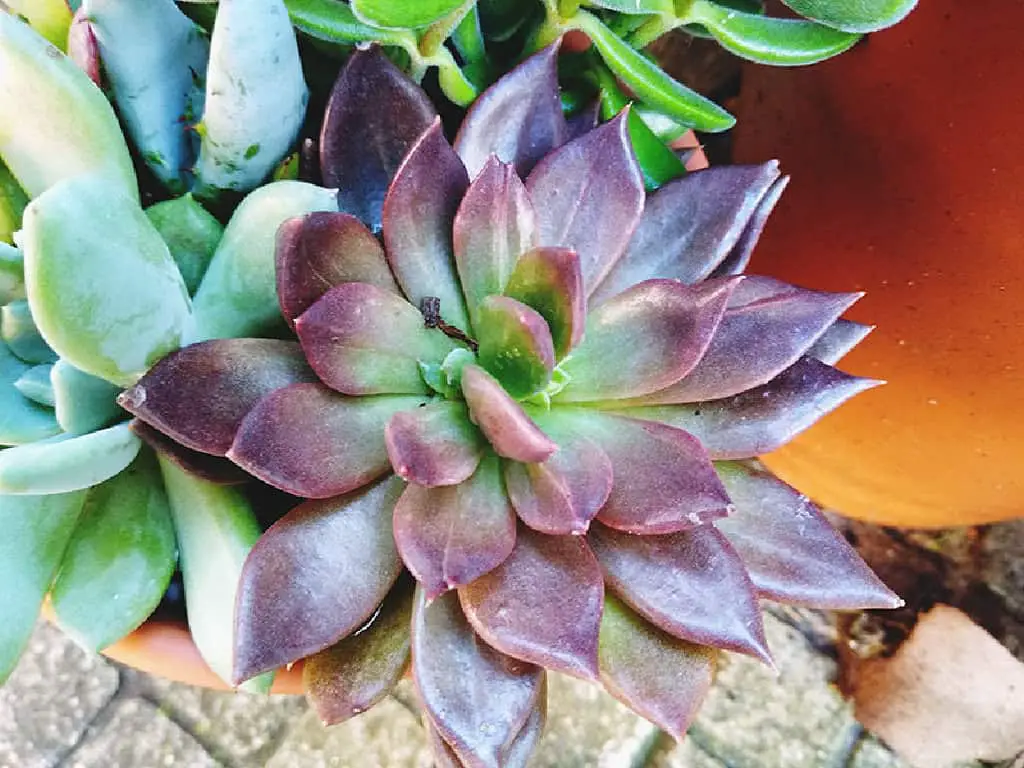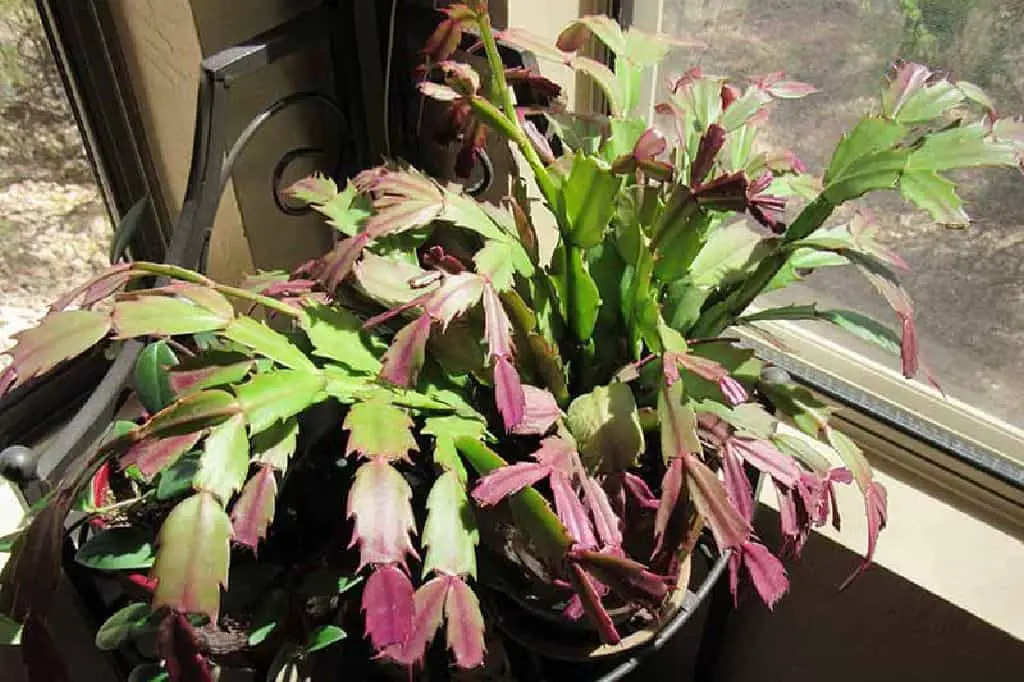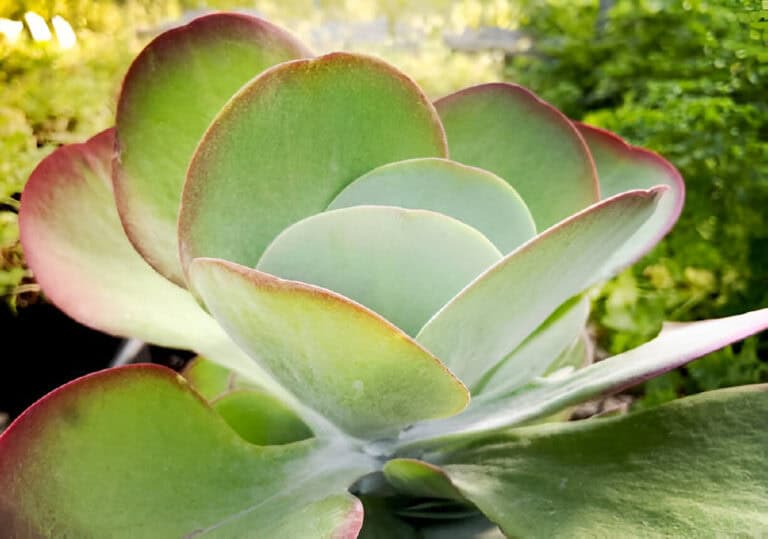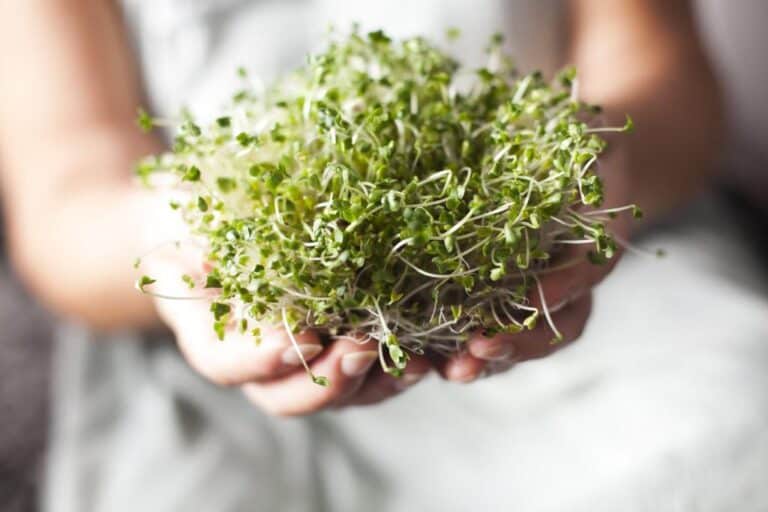Succulent Turning Purple? Here’s What It Means

Succulents are renowned for being low maintenance and easy to care for. That’s exactly the reason why they are one of the most popular houseplants across the globe. However, if you begin to notice your succulent turning purple, it could be down to certain stress factors. In this article, I will be discussing all the different reasons why your succulent is turning purple.
Succulents usually come in vibrant greens, however, some succulent types will actually come in beautiful shades of purples and pinks. Before reading on, you should do some research into the type of succulent you have and whether or not it is normal for it to be purple!
Help!…Why Is My Succulent Turning Purple?!
So, why is your succulent turning purple? Succulents tend to change color when they are exposed to a certain level of stress. Many different environmental factors can cause a succulent to turn purple, such as overwatering or underwatering, intense sunlight, freezing temperatures, wrong soil type, or a sudden change of environment.
If you are after the scientific answer, then a succulent turning purple will be because it is producing a pigment called anthocyanin – this can turn a succulent purple, red, or blue. Traditionally, this is what gives fruits like berries and strawberries their beautiful colors, but when a succulent begins to produce anthocyanin, it will be to protect the plant from temperature stresses and overexposure to sunlight.
Now that you have a brief understanding of what causes a succulent to turn purple, let’s delve a little deeper into each of the above!
Overexposure to Sunlight
We all know that succulents LOVE a bright and sunny spot. Succulent leaves and stems store water, which is why they are so often found in desert climates. They can go long periods of time without water and thrive in sunlight.
However, it is possible for a succulent to get too much sun. In fact, most plant types are actually susceptible to sunburn! I know; it blew my mind too when I first heard about it. But if your succulent is outdoors in direct sunlight or on a window sill that gets a lot of direct sun, then this could quite easily be the cause of your succulent turning purple.
Try to avoid direct sunlight, especially if you live somewhere that reaches extreme temperatures in the summer months. Instead, you should try to provide your succulent with indirect sunlight throughout the day.
Cold Temperature
What’s even worse than extreme direct sunlight for a succulent, is, in fact, freezing temperatures! Succulents do not do well at all in cold temperatures because they are native to hot, desert areas. If you live somewhere that reaches freezing temperatures in the winter months, then you should definitely be bringing your plants indoors for this period.
Although some varieties of succulents can survive cold temperatures, most will suffer. It will stunt their growth and, on some occasions, may also produce black spots on your succulent. This is essentially frostbite, and to begin with, you may notice your succulent turning purple before it gradually turns into a deeper shade of black.
The best advice here is to keep succulents as an indoor houseplant, where you can control the temperature.
| You might also like to learn about Succulent Etiolation |
Wrong soil
Succulents and cactus enjoy a very specific soil type that is filled with organic matter! You can go to your local garden center, and they will most likely sell a ready-mixed potting soil specifically for succulents.
The main thing to remember is that succulents need well-draining soil as they are prone to overwatering. If you want to have a go at creating your own potting soil mix, then you should be using part organic matter, such as peat moss, and part inorganic matter, such as granite. This will keep the soil light.
Using regular plant potting soil will be way too dense for your succulent. This means that it will absorb too much water – causing your succulent to turn purple!
You should also be fertilizing your succulents once a year before their growth period. If you are into DIY, then you should try using coffee grounds on succulents.
Overwatering

Succulents are very prone to overwatering. As mentioned above, they are native to hot climates and store water in their stems and leaves. There is no magic watering schedule that you should follow, and with there being 100’s of succulent types, it totally depends on the individual plant.
Succulents do, however, need to be watered more in the summer and spring. As a rule of thumb, you should wait for the soil to be completely dry before rewatering. When you do water, make sure you are giving your succulent a thorough soaking. Always ensure you are using a pot with drainage holes and ensure that any excess water gets poured away. Do not let your succulent sit in the excess water. This will cause root rot and you will notice your succulent turning purple.
Other signs of overwatering will be the leaves turning yellow, and your succulent will begin to feel mushy and soft. You may also notice that the leaves begin to fall off. Overwatering is a common problem with succulents, and if you think that this is the cause of your succulent changing color, then you should stop watering your plant immediately.
Overwatering will also attract unwanted pests such as mealybugs, spider mites, and fungus gnats.
Underwatering
Just like overwatering, underwatering can also be a reason for your succulent turning purple. Although the consequences aren’t so dire, you should still not let your succulent get to the point where it is desperate for a big ol’ drink.
If your succulent is changing color due to underwatering, then firstly you should check the soil. If it is bone dry throughout, then you know you should water immediately. Other signs of an underwater succulent will be shriveled stems and leaves, crispy leaves, and aggressive shedding of leaves.
Sudden Change of Environment
Finally, a succulent may turn purple due to a sudden change of environment. This will typically be due to temperature changes. Usually, if you are moving your plant from one area to another, then it should be done gradually over a few weeks.
If, for example, you move your succulent from outdoors, to indoors and there is a sudden change in temperature, then your succulent may start to change color. This isn’t anything to worry about, and the change will be purely aesthetic.
The above topics will be the main reason you notice succulent leaves turning purple or succulent stems turning purple.
| Read on: Succulent Terrrarium Care Tips. |
String of Pearls Turning Purple
One of the most common questions I get asked is ‘Why is my string of pearls turning purple?’. Unfortunately, this is often a sign that your string of pearls is dying. The reason could be down to any of the above topics we have discussed: too much sunlight, freezing temperatures, wrong soil.
Overwatering, underwatering, or a sudden change in environment. You’ll need to do some detective work to decide upon the reason why your string of pearls are turning purple.
Succulent Turning Purple…the Last Word!
I hope you have enjoyed this article on succulents turning purple. You should be able to now take the first steps in fixing the problem and stop your succulent from further changing color. We discussed a handful of reasons why a succulent will turn purple and these are:
- Overexposure to sunlight
- Cold temperature
- Wrong soil
- Overwatering
- Underwatering
- Sudden change of environment
If you are still having trouble figuring out the cause of your houseplant changing color, then leave a comment and I’ll get back to you as soon as I can.






